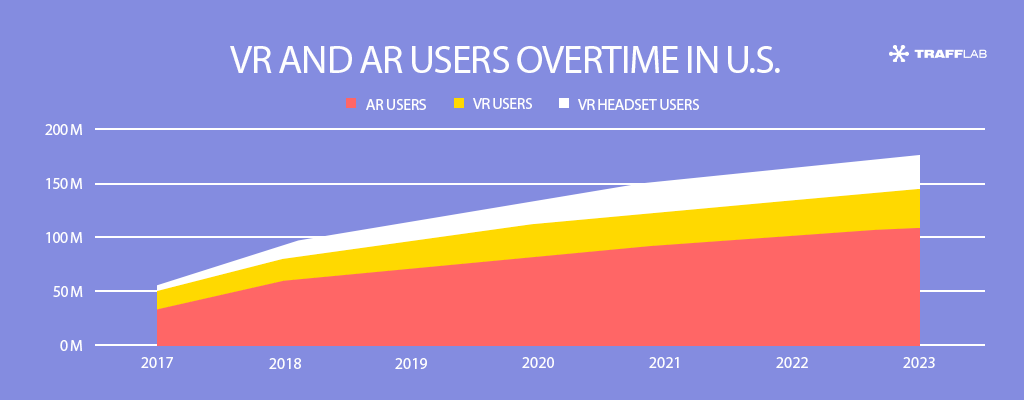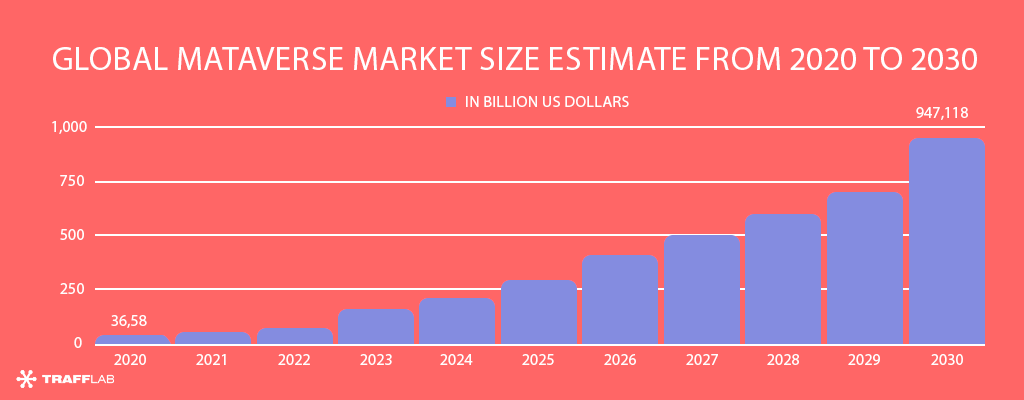
The Future of Digital Marketing in iGaming: Trends and Forecasts for the Next 5 Years
Introduction
Online casinos and gaming platforms have established a significant presence in the rapidly evolving world of iGaming, where digital marketing plays a crucial role in attracting and, most importantly, retaining players. Adapting to constantly changing conditions and new technologies is an essential skill for anyone involved in this niche.
To navigate successfully in this dynamic environment, it's important to be aware of the future of digital marketing in iGaming. The growing popularity of online casinos is a key driver of this growth, further fueled by increasing customer spending and the potential for more accessible government regulation. But what are the forecasts and trends for the next five years?
In this article, we will answer the question of why it is becoming popular so rapidly. Additionally, we will examine the latest forecasts and trends that are expected to impact digital marketing strategies in this niche.
WHAT IS IGAMING?
Imagine this: you enter a virtual world where you can play your favorite casino games anytime and anywhere without leaving your home. This is iGaming, which has transformed our perception of gambling and entertainment in general.
In this fantastic world, traditional casinos have evolved into exciting digital platforms offering a wide range of games. From classic card games like poker and blackjack to thrilling slot machines and roulette, you can find it all with just one click!
iGaming can be divided into two categories:
- Online Casinos
Online casinos offer a variety of games: slots, poker, roulette, baccarat, and more. Operators create new themes and rewards to attract players, making slot machines particularly popular.
- Online Sports Betting
This involves predicting the outcome of sporting events for cash rewards. Sports such as basketball, football, baseball, hockey, rugby, American football, and even esports are included in this form of betting.
WHY IS IT BECOMING SO POPULAR?
According to IMARC Group data, the online gaming business is currently valued at $88.65 billion, with a forecast to increase to $133.9 billion by 2028. It is expected that this industry will grow at a compound annual growth rate (CAGR) of 8.60% between 2023 and 2028, demonstrating its significant growth potential.

The growth of online gambling is closely tied to the integration of the Internet into our everyday lives. As our culture rapidly embraces the digital sphere, the demand for entertainment of this kind is on the rise. The success of this sector is driven by various factors: cultural acceptance, legalization, accessibility, celebrity endorsements, and corporate sponsorship.
The online gaming industry is reaching new heights thanks to innovative technologies. Game creators can now deliver immersive and interactive experiences through augmented reality, artificial intelligence, machine learning, cloud-based iGaming, and 5G networks.
iGaming Trends for the Next 5 Years
Riding the VR Wave
VR is a fantastic computer technology that creates a simulated environment that can be explored in 360 degrees. The future of virtual reality is set to take off with the release of the Apple Vision Pro. VR distinguishes itself by immersing users in a virtual world instead of using conventional interfaces, providing beautiful and realistic interactions.
The industry is rapidly expanding, and it's expected that by 2028, the global virtual reality market will reach $53.44 billion. The anticipated growth will benefit both the corporate and consumer sectors, including the VR gaming industry.
Research also shows that 171 million people worldwide are using VR, and the demand for this technology is only growing. This growth has a significant impact on the iGaming industry. Interestingly, China is the biggest spender on virtual reality projects, with a budget of $72.8 billion for 2024.
More and more gamers are venturing into iGaming as virtual worlds become increasingly captivating. Additional laws are likely to be enacted soon to ensure the safe and ethical use of gambling and protect players from fraud.
Virtual reality games have significantly expanded, allowing gamers to immerse themselves in unique gaming experiences. As a result, virtual reality casinos and other gaming companies have emerged.

Artificial Intelligence (AI)
According to recent analysis, the artificial intelligence market is set to expand rapidly, with a projected average annual growth rate of 35.6% from 2023 to 2028. It is expected that during this period, the market will grow from $11.3 billion to $51.8 billion.
While artificial intelligence is already being used in games, its full potential is yet to be realized. AI, with its capabilities in sound recognition, voice control, and assistance in various aspects of iGaming such as marketing and customer service, can enhance the gaming experience.
An exciting and customizable gaming experience is further intensified by artificial intelligence. By analyzing player activity using AI algorithms, gaming platforms can provide a personalized experience to each player.
Cloud iGaming
Between 2023 and 2028, the global sector is expected to grow at a CAGR of over 30%. Expanding enterprises can capitalize on this opportunity.
Cloud gaming allows players to participate in gaming activities without the need to download them onto their devices. This has enriched the variety of available games and simplified access for gamers.
The interactive gaming sector is constantly evolving, utilizing the latest advancements to enhance the user gaming experience. The iGaming industry is prepared to offer even more exciting games as technology evolves.
5G Connectivity
Global implementation of 5G technology will impact various industries, including iGaming. The development and expansion of live casino games will reach unprecedented levels, thanks to the enhanced capabilities offered by 5G, providing players with a more captivating and dynamic gaming experience.
In various ways, 5G can transform the iGaming sector:
- Enhanced network bandwidth (5G is 100 times faster than 4G).
- Improved virtual reality gaming.
- Adaptive games.
- New payment options.
Direct video streaming is becoming more popular.
The global direct video streaming market was valued at $1,219.19 million in 2022 and is expected to reach $6,555.32 million by 2030, stretching at a CAGR of 23.40% during the forecast period.
Companies can prepare for the growing popularity of video streaming by taking the following steps:
- Creating a video strategy
Consider how video content can fit into your marketing strategy and what platforms you can use it on.
- Investment in quality equipment
Quality videos are critical because videos with poor quality will get fewer views and lose potential audience.
- Create an audience
Use your social media platforms to promote your live streams to your followers. This way you will encourage more participation and interaction.
- Interaction with viewers
Live chat will never die; respond to comments and questions in real time during live broadcasts. This way you will increase audience engagement.
- Measuring success
Finally, don't forget to track your results; if you analyze your mistakes and create more and different content, you will find your way to growth.
Forecasts for the Next 5 Years
Rise in the Popularity of the Metaverse in iGaming
Metaverse gaming is one of the major innovations in iGaming. Through virtual online worlds, games, and player simulations, players can interact with each other. Players and developers benefit from the 3D Unity metaverse, with a primary focus on the social aspect.
The potential for an all-encompassing virtual community is enormous, and this trend is expected to continue as technology evolves. Online betting may not be new, but the metaverse can create a new era of communication and gambling from the comfort of your home with your digital avatar.
How Can This Benefit Your Digital Marketing?
Companies must pay close attention to the metaverse to effectively target the younger generation, including Generation Z and millennials, as this area holds the greatest interest for these groups.
The virtual world reflected in the metaverse allows companies to express their brand beyond traditional mass media. Creating unique and immersive experiences is possible thanks to limitless possibilities.

One example is a smart marketing initiative that AMD combined with Fortnite in the Metaverse. Offering a free gaming PC equipped with AMD hardware as a prize generated significant buzz and encouraged players to participate in game modes sponsored by the brand. As a result, AMD's products became significantly more associated with the gaming experience.
This example demonstrates how brands can use the Metaverse and gaming platforms to create engaging experiences that promote their products or services. By integrating their brand into popular games like Fortnite, companies can interact with a larger player audience, visually showcase their products, and generate interest through unique game modes and gifts.
Esports Will Continue to Expand
The esports sector is experiencing significant growth, and this trend is expected to continue over the next decade. By 2028, the global esports betting volume is projected to reach $24.19 billion with an expected growth rate of 13.7% from 2023 to 2028. It has transitioned from competitive gaming to incorporating merchandise, content creation, and mainstream media coverage.
What You Need to Know About Esports
Half of Generation Z and millennial gamers express their interest, highlighting that a younger audience typically prefers esports. It's essential to acknowledge this preference.
Generation Z is more likely to engage in esports on social platforms, while millennials are more likely to purchase content. For brands, this means taking a different approach to both groups but always keeping digital content in mind. Social media exerts a growing influence on both generations, particularly video platforms and community-oriented messaging services like Discord, Snapchat, Twitch, and Reddit.
They spend more time on social media than the average gamer, and those who gather gaming information from social platforms are also more likely to use them for viewing live broadcasts.

In May 2022, TikTok introduced the LIVE subscription, a monthly payment that allows users to support their favorite creators during live broadcasts as part of the TikTok made me play it event.
In some regions, the gambling industry requires assistance with legalization. Nevertheless, more countries are legalizing betting, potentially opening up new market opportunities. Athletes and celebrities are collaborating with esports organizations such as Complexity Gaming and 100 Thieves to expand their fan base. This approach enables them to attract a broader audience than just gamers.
Initially, influential game creators on platforms like YouTube and Twitch spearheaded the development of various products, merchandise, and a full content ecosystem, transforming esports from competitive gaming into something much more.
Overall, esports has expanded the range of players and games available to the public. Moreover, it has contributed to normalizing the esports industry and increasing its accessibility, resulting in more people participating in online gaming. As esports continues to gain popularity, its impact on iGaming will remain significant.
Conclusion
In the future, there are numerous promising emerging trends and forecasts in the field of digital marketing in iGaming. Thanks to innovative technologies like virtual reality, artificial intelligence, cloud gaming, 5G networks, and live streaming, games will be refreshed, players will be able to interact with a more extensive range of content, and viewers will engage with games in a more immersive manner.
Currently, brands can join the younger generations and provide experiences through the development of the Metaverse and the expansion of esports. To remain competitive in iGaming, marketers must understand these growing trends, adapt to the changing environment, and harness the industry's growth potential.
12.10.2023